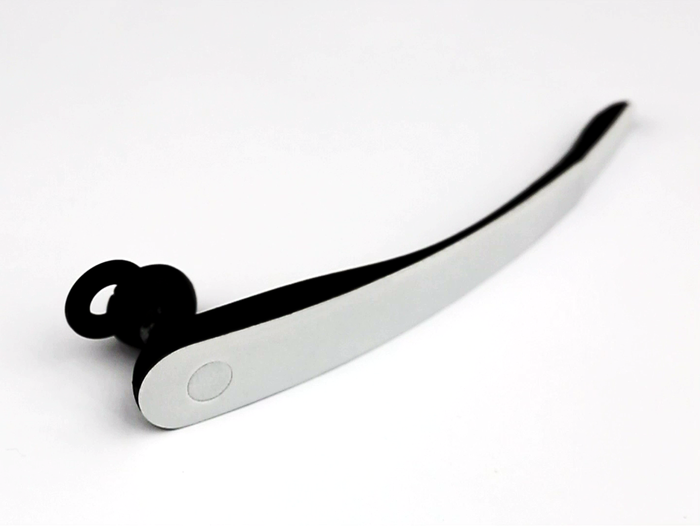Drowsy Driving No More: Device Monitors Alertness, 'Nudges' You When You're Falling Asleep

Chances are that if you’ve ever driven a long distance, there was at least one time that you caught yourself falling asleep. There’s something about being on the open road for hours, lane markings repeatedly passing by, that easily lulls some people to sleep. Looking to make those car rides a thing of the past, developers of a new device, who are looking to be funded on Kickstarter, say that the device monitors a driver’s alertness and “nudges” them when they need to wake up.
The Vigo looks and is worn like a Bluetooth attachment — it doubles as one. But its slightly longer length allows an infrared sensor on its tip to track its user’s blinking patterns — blink rate, duration, the amount of time the eye is open versus closed — and forms algorithms that can determine when there’s a change. Furthermore, it uses a built-in accelerometer to catch those moments when the driver’s head drops from drowsiness. It “knows you’re drowsy before you do,” the Kickstarter product description says.
Drivers can choose one of three different ways for the Vigo to “nudge” them awake: They can choose to have a red LED light flash into their eye from the tip of the device; to have the Vigo send a signal to their phones to vibrate; or they can choose a “pump up” song for the Vigo to play. “We are creating a device that is there to make sure you are at your best and alerts you when you are dozing off, like a friend sitting next to you in class or in the passenger seat,” Jason Gui, Vigo co-founder and chief technical officer, told Fast Company. “We don’t want to give them a reason to continue driving while drowsy, for example. The idea isn’t to create a device that acts as a coffee substitute and prevents people from sleeping.”
Instead, the device monitors the periods of the day that its user is alert, and then develops a graph that shows when its user is typically tired and when they’re at peak energy — all of the device’s features are accessible from an app on the user’s phone. The graphs can then be used to maximize efficiency by allowing users “to see patterns and make changes in your routine.”
According to a report on drowsy driving from the Centers for Disease Control and Prevention (CDC), 4.2 percent of 150,000 participants had reported falling asleep at least once while driving in the 30 days prior to being interviewed. Meanwhile, a recent report from the AAA Foundation for Traffic Safety found that as many as one in four young drivers reported being tired to the point that they had a hard time keeping their eyes open. AAA also noted in a press release a 2010 study that found that 17 percent of fatal crashes, 13 percent of crashes resulting in hospitalization, and seven percent of crashes involving a tow involved drowsy drivers — a much larger number than the CDC’s “conservative” estimates, which put fatal crashes and injury crashes at 2.5 percent and two percent, respectively.



























